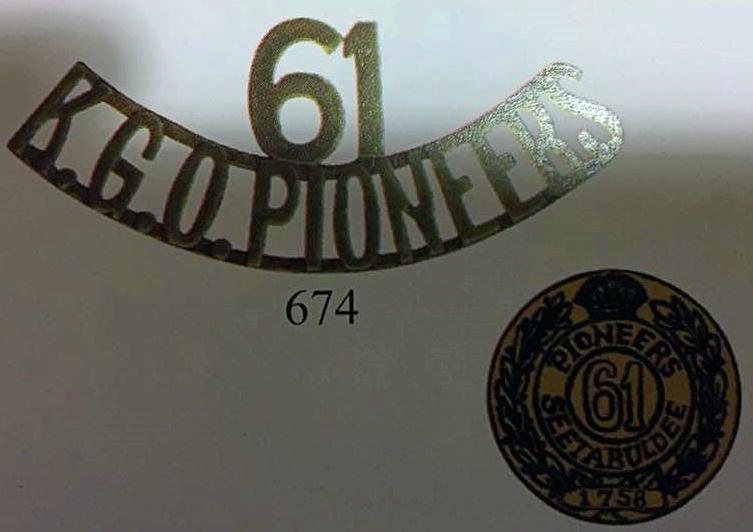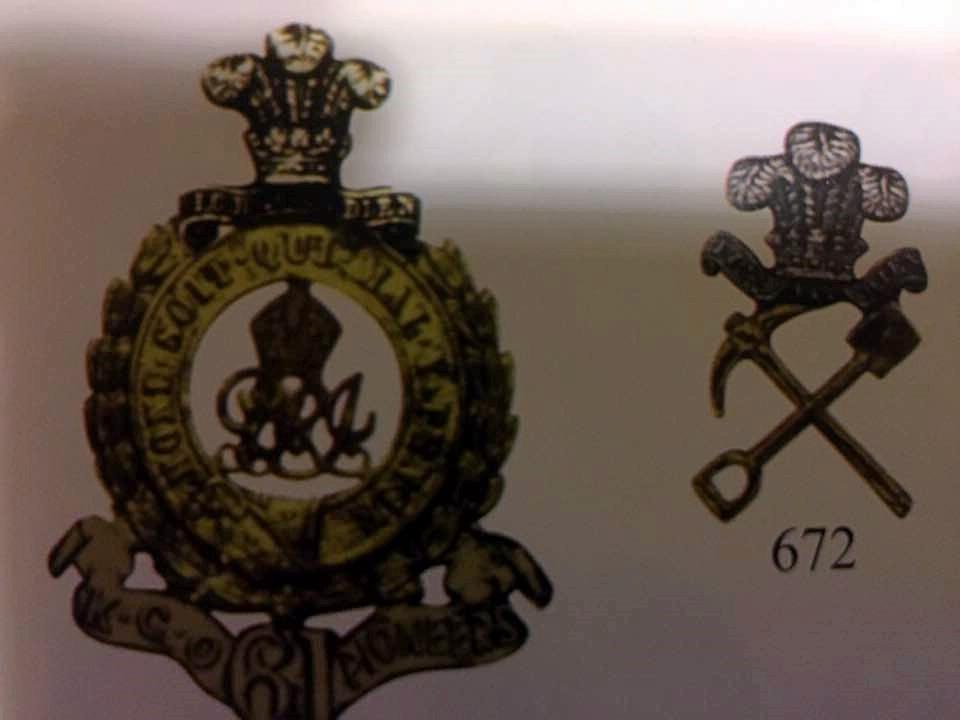-
Posts
4,862 -
Joined
-
Last visited
-
Days Won
15
Content Type
Profiles
Forums
Blogs
Gallery
Events
Store
Posts posted by peter monahan
-
-
What a great image! Thanks.
0 -
Could well be, Duncan. I once bought a group of 8 to a Risaldar Major, Indian Cavalry out of a suitcase full of silver medals, smuggled out of India in defiance of the 'no exporting bullion' law. The irony is that the two non-silver gongs - 1914-15 Star and Victory Medal- had been thrown away by the picker who bought the group for the value of the metal.
 It may well be that the country has now banned all exports of military awards.
0
It may well be that the country has now banned all exports of military awards.
0 -
At one time the only way to get silver medals out of India was 'privately' - undeclared or by arrangement with an accommodating shipper, as Indian law forbid the export of gold and silver. Probably honoured more in the breech than in the observance, but that was the law twenty or so years ago when I was trying, with limited success, to collect silver medals to the Indian Army.
So, it may be the case that a new law, or new enforcement of an existing regulation, has made the dealers stop advertising - because I'd be very surprised if they stopped actually selling - on easily monitored platforms such as ebay. Just a guess, however. Ed Haynes, who runs the 'SA Gongs' Fbook page, will know if there is such a reason, as he is a true specialist and travels regularly to the subcontinent.
Or perhaps they've just found better ways to market. But I would be interested to hear, if you find an answer!
Peter
0 -
Truly gorgeous objects, even if one ignores the medallic and historic importance.
The book is good news too, Rusty! Good on ya, cobber!
Peter
0 -
As usual, the experts come through! And this is why the GMIC is one of my favourite destinations on the Web!
 0
0 -
The badges I've posted would have been worn from the 1910 re-naming until replaced by cloth titles sometime in the early '30s. Or until their disbandment?
Michael, Gunner asked specifically about the 'KGO' S & M, and the illustrations seem clear - '61' = KGO. Or am I misunderstanding you?
I can't explain the '61' but do believe that Ashok has it right. Here is the information from Wiki, sourced from the Corps of Engineers Museum. Gunner, I hope this helps.
· 1803 1st company raised by Capt T Wood as Bengal Pioneers
· 1851 became Corps of Bengal Sappers and Pioneers
· 1903 became 1st Sappers and Miners
· 1906 became 1st Prince of Wales's Own Sappers and Miners
· 1910 became 1st King George V's Own Bengal Sappers and Miners
· 1923 became King George V's Own Bengal Sappers and Miners
· 1937 became King George V's Bengal Sappers and Miners
· 1941 became King George V's Bengal Sappers and Miners Group of the Indian Engineers
· 1946 became King George V's Group of the Royal Indian Engineers
· 1947 half allocated to India on Partition and half to Pakistan
Lord Kitchener's Reforms in 1903 saw it redesignated as the '1st Sappers and Miners' which was, again, altered in 1906 to '1st Prince of Wales's Own Sappers and Miners'. On the accession of George V to the throne in 1910 it was renamed '1st King George's Own Sappers and Miners' with the numerical nomination being dropped in 1923. In 1937 it was re-titled 'King George V's Bengal Sappers and Miners'. In 1941 they became the 'King George V's Bengal Sappers and Miners Group' of the Indian Engineers in 1946 the 'King George V's Group' of the Royal Indian Engineers. [The Royal Engineers Museum and Library “Corps History Part 10 - Indian Engineering Soldiers 1777-1947”;]
0 -
MonsieurJ
Welcome to the GMIC! I am in Canada and can only speak for the situation here, but between confidentiality rules and slow digitization of records - beginning with the oldest, for obvious reasons - I do know that WWII records are harder to research than WWI and 'between' and 'after' the 'Wars' quite tough. However I'm confident that some of our UK members will offer useful advice.
Again, welcome, and good luck in your hunt!
Peter
0 -
Proof marks and identifying marks - batch, year, etc, -were stamped at the 'top' of the blade, just below the guard, by the manufacturer. I think I recall that regimental marks, as here, were stamped somewhere on the hilt. I believe I've seen an example where a Cdn. regiment had stamped the hilt where it joined the hilt/grip, but can't remember details, so these markings seem 'right' to me.
0 -
-
Excellent! Your work, Horsa?
0 -
Very interesting indeed! Presumably the Jordanians concluded that the heavy bowl was of little use and, to save weight, made some 'mods'. Possibly for dismounted use or perhaps simply because, while they needed/wanted to carry them, there was no expectation of mounted combat and so no need for the full length and full bowl of what was, in essence, designed as a short lance.
A fascinating story I read decades ago refers to hundreds of US cavalry sabres sent out to the Philippines & Australia just before or early in WWII. Brand new, never issued. After the last horsed unit in the Philippines - the 26th Cavalry - charged on and then ate their mounts, the sabres were repurposed as machetes by: grinding down the hilts and shortening both blades and scabbards. I never bothered to really research the story, in a novel by a US writer with intimate ties to the US Army, but it has a ring of truth. My suspicion is that these, especially if there are examples in the TFF Museum, were an official modification and issued as such.
My tuppence worth!

Peter
0 -
It's interesting how different colors react so differently to time and light. Canada just celebrated it's 150th birthday and a number of friends have bumper stickers noting the anniversary. In all cases, the colours - 12-18 months later - are crisp and bright, except for the red on the flag and lettering, which has faded to a banana yellow. And, while red is notorious for that problem, kit's not the only dye to cause problems. Odd, but in a way, fascinating.
0 -
Ribbons for African and Asian decorations, especially older or obsolete ones, are notoriously difficult to find/replace and many examples are sold with what appear to be 'close enough' type substitutes or replacements. But, yes, disappointing and annoying.
 0
0 -
Not my field at all, but a high school chum had a Luftwaffe dagger which his dad had taken from a captured Fallschirmjager officer in Holland in late'44-early '45, so it was the first real militaria item I ever came across. As several others have noted, this is not the standard pattern.
Even the originals, BTW, did not actually have ivory handles in most cases, but a form of plastic or Bakelite, which the Germans were early pioneers in the use of.
0 -
I know the feeling! I have three rooms devoted to military clobber of various types and periods and can put my hands on all of it. Just not necessarily when I want or need to!
 0
0 -
Welcome to the GMIC, Alan. Yes, Mervyn is sadly missed, both for his expertise and his big heart and welcoming ways.
I have no information on the colour, but then I'm on the wrong side of the Atlantic, I suspect. However, the tentacles of the GMIC do seem to get into some very obscure places and I am hopeful that one of our members may have information for you. Well done for taking on the task of preserving the history of a proud regiment.
Peter
0 -
A nice bonus then! And a buckle 'worn with pride', or at least brick dust. These used to be fairly common even this side of the Great Salty and I think some of the Canadian militia units still issue them to bands and colour parties who wear the uniforms of that period on occasion.
0 -
A friend recently visited the Zippo factory and I gather from several of his remarks that one can purchase many of these 'historic' designs there.
0 -
I once owned a couple bronze QSAs to Indian followers - a 'Sais' [groom] and one other which escapes me now. Love the variety of ranks and trades they represent.
0 -
What a wonderful photograph! Seriously intimidating looking veterans!
0 -
3 hours ago, coldstream said:
GreyC,
Would a Member of a Cavalry or Yeomanry Unit be issued with a cane, surely it would have been the whip or crop as seen in many images of the period.
Simon.
It was the fashion for young men to carry small [completely impractical] canes during the 1880s-1890s and soldiers were quick to follow this fashion, not least because they echoed the 'stick' carried by RSMs and such like. A cane would be perfectly appropriate for a CDV taken of a trooper in walking out dress.
Peter
0 -
Good call! 'Art' by a loose definition of that word.
 0
0 -
This is an example of the British 'Home Service Helmet', modelled on the white sun helmets worn by British troops serving in hot climates. These were used in the second half of the nineteenth century and, I think, in the ceremonial dress of some regimental bands and so on even today. The badge is that of the 'Queen's Own Regiment'. Here is a link to its history: http://queensregimentalassociation.org/queens-badge.html
No idea whether this is an original or a reproduction. If you google 'home pattern helmet' you will find many examples of both for sale. A very pretty piece!
Peter
0 -
I would assume that the lack of cap badges - the 4th C.M.R. wore an odd/ugly one of a moose - was due to the early date on the photo and the fact that the unit was raised in November,1914. Some units of the CEF had badges - some or all - made in the UK after arrival there. And then promptly added them to their caps, of course, so how a cap could last the War without being badged is still a mystery to me, unless it belonged to someone who was invalided out [for example] from a newly raised unit like the 4th and he just kept the cap. A real puzzle.
0






Mystery modified 1908 Cav Troopers sword
in Great Britain: Militaria: Badges, Uniforms & Equipment
Posted
Agreed. Many weapons designed for 'Asian' troops - Indians, Gurkhas et al - had smaller grips and occasionally were lighter in weight, so this is very likely a local modification done to suit the new users.